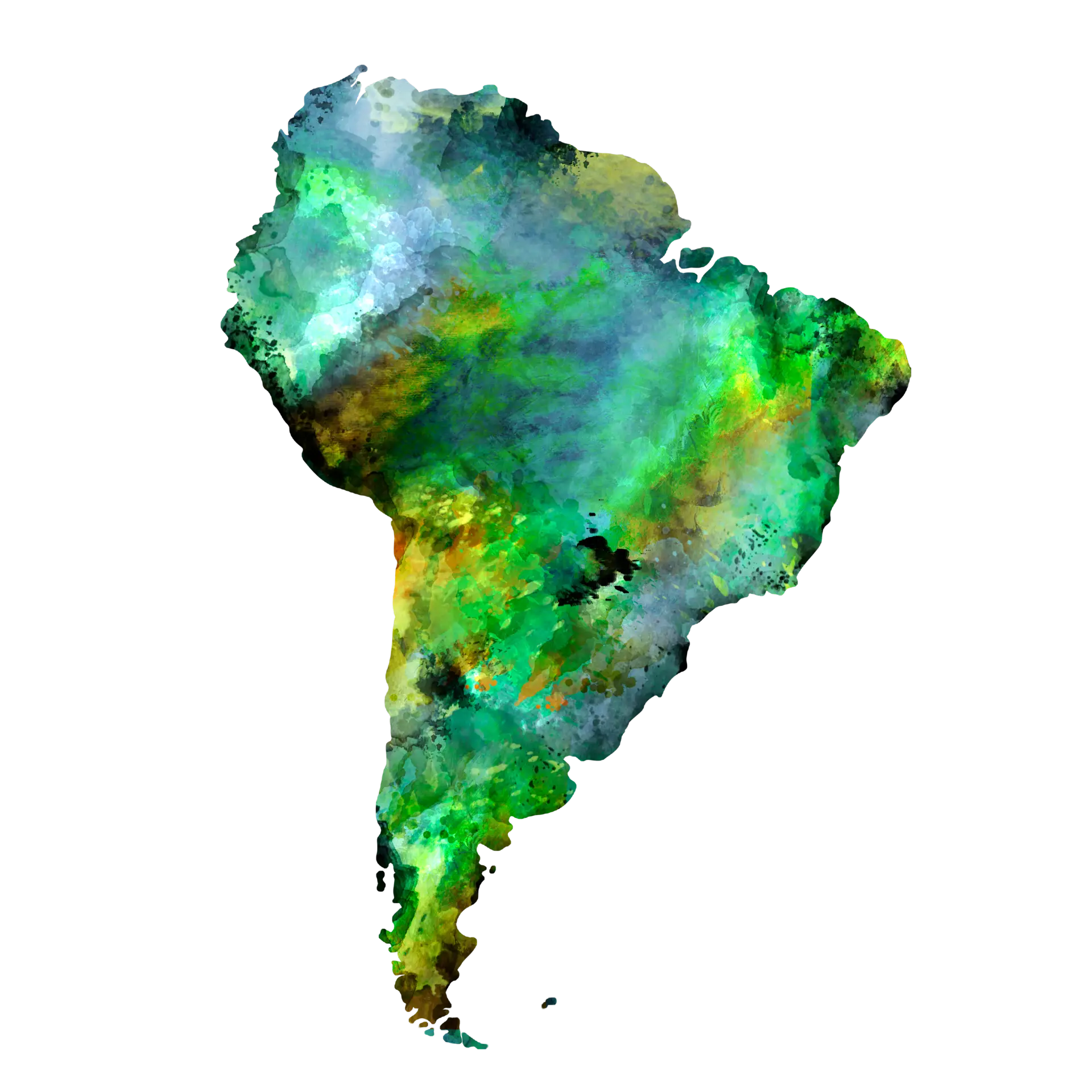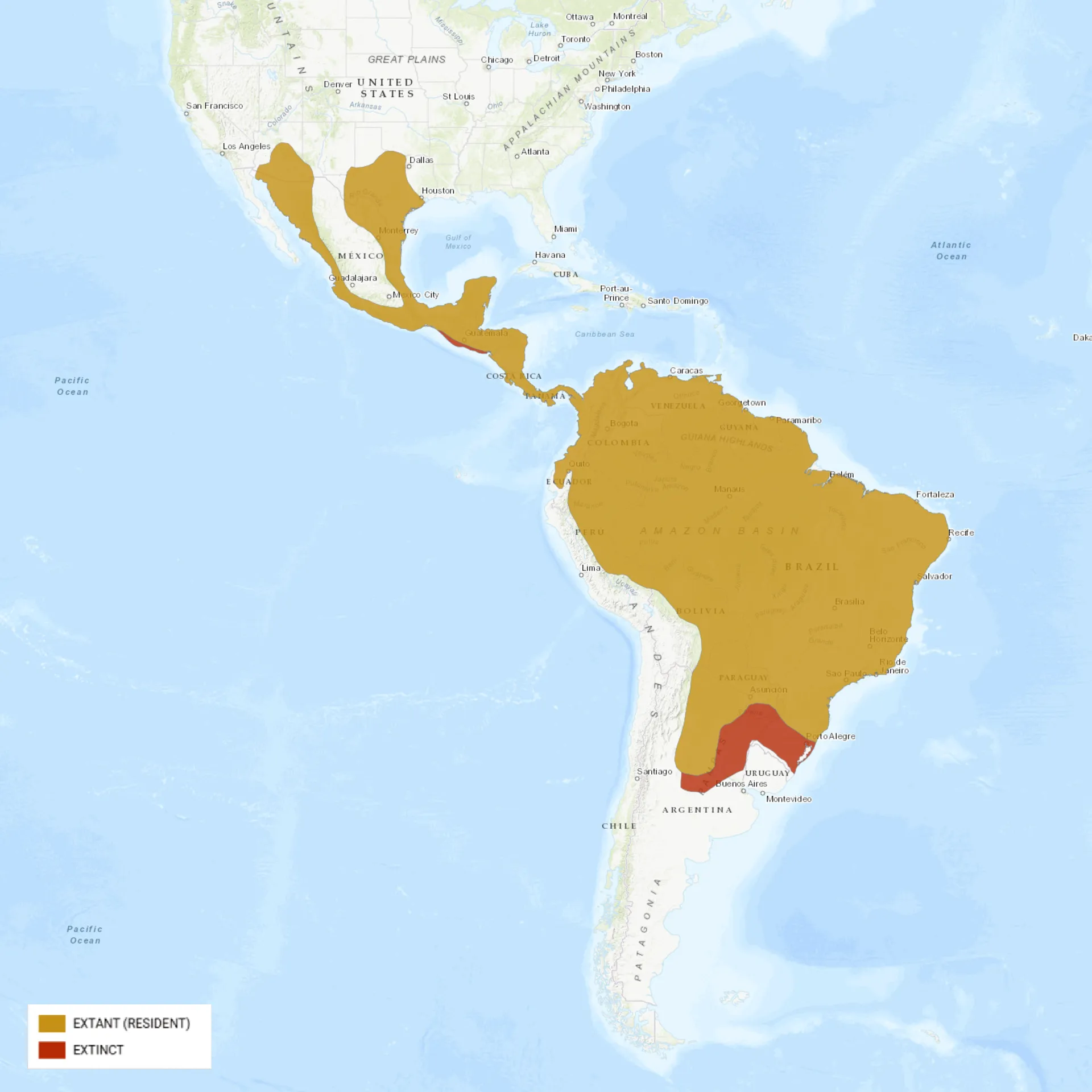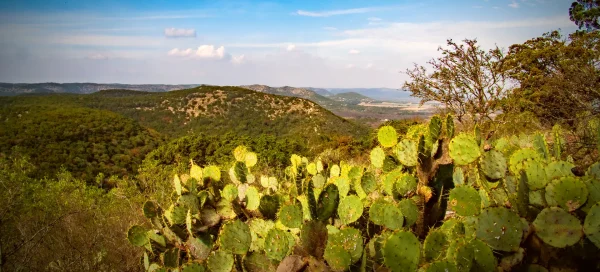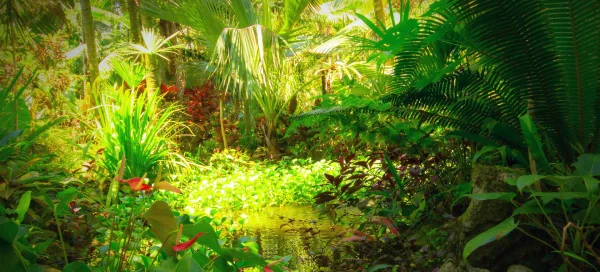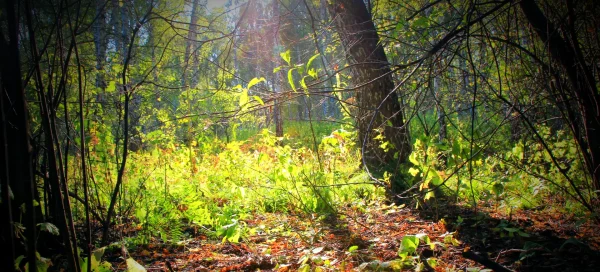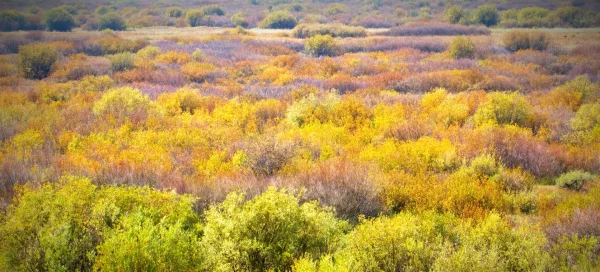Overview
The Collared Peccary is a medium-sized ungulate native to the Americas. It is easily recognized by the light-colored “collar” of fur that runs from shoulder to shoulder. Despite their pig-like appearance, they belong to the family Tayassuidae, which is distinct from true pigs of the family Suidae. These animals are highly adaptable and found in a wide variety of habitats, ranging from deserts to tropical forests. They are social creatures, typically living in small herds that provide mutual protection and aid in foraging.
The species is primarily diurnal, with peak activity in the early morning and late afternoon, though it may shift to nocturnal activity in areas with high human disturbance. Collared Peccaries use their strong snouts to root for food and are known to consume a wide variety of plant and animal matter. Communication within the herd is facilitated through vocalizations, body language, and scent marking from specialized glands. Their tough, bristly coats and sharp tusks defend against predators such as jaguars and coyotes.
Collared Peccaries play an important role in their ecosystem by aiding seed dispersal and soil turnover through their foraging habits. They are commonly found in protected areas but occur near human settlements, where they may conflict due to crop damage. The species is hunted for meat and hide in some regions, although regulated hunting typically does not pose a significant threat. Population levels remain stable in most areas due to their wide distribution and ecological flexibility.
Taxonomy
Kingdom
Phylum
Class
Order
Family
Genus
Species
Type
Current distribution:
The Collared Peccary ranges from the southwestern United States through Central America into northern Argentina, Paraguay, and Uruguay. In the U.S., it is commonly found in Arizona, Texas, and New Mexico, with expanding populations in neighboring states. The species is widespread in Mexico, occupying varied terrain from coastal forests to mountainous woodlands. Its range continues throughout Central and South America, avoiding only the high Andes and Amazon interior, where white-lipped peccaries are more dominant.
Population densities vary significantly by region, habitat quality, and hunting pressure. They are abundant in protected areas and suitable habitats and form stable herds, while populations may be patchy in fragmented landscapes. Some expansion into urban and suburban zones has been observed, particularly in the U.S. Southwest. Although hunted in many areas, the species remains common and is not considered globally threatened.
Physical Description:
The Collared Peccary has a compact, pig-like body covered in coarse, dark gray to black bristly fur with a contrasting lighter-colored band around the shoulders and neck forming a “collar.” Its head is relatively large with a long, pointed snout used for digging, and small, rounded ears that lie close to the head. The legs are short and strong, supporting a robust frame, and the tail is small and often hidden by the fur. Both males and females have sharp, ever-growing canine teeth forming tusks for defense and dominance displays.
There is minimal sexual dimorphism, though males may be slightly larger and heavier than females. The dorsal scent gland on the rump is well developed and used for marking territory and individual identification. Their eyes are small and their vision is relatively poor, but they compensate with a strong sense of smell and hearing. Juveniles are born with reddish-brown fur and lack the distinct collar, which develops as they mature.

Lifespan: Wild: ~10 Years || Captivity: ~20 Years

Weight: Male: 44-88 lbs (20-40 kg) || Female: 40-84 lbs (18-38 kg)

Length: Male: 36-40 in (91-102 cm) || Female: 35-39 in (89-99 cm)

Height: Male: 20-24 in (51-61 cm) || Female: 19-23 in (48-58 cm)

Top Speed: 21 mph (33.8 km/h)
Characteristic:
Native Habitat:
Collared Peccaries are native to various habitats throughout the Americas, including tropical rainforests, savannas, deserts, scrublands, and dry forests. They are most abundant in areas with dense ground cover and a reliable water source, although some populations persist in arid regions by exploiting succulent plants for moisture. They are often found in secondary growth forests and areas near rivers or swamps in tropical and subtropical environments. Their adaptability to a variety of vegetation types contributes to their wide distribution.
They prefer habitats with complex understory structure for cover and resting sites, and typically create beds in dense vegetation or dig shallow depressions. During the day’s heat, they rest in shaded areas, often communally, to regulate temperature. In desert regions, they are commonly associated with mesquite, agave, and cactus-dominated landscapes. They inhabit lowland and foothill forests in more humid zones, often using trails or clearings for movement.
Biogeographical Realms:
Continents:
Countries:
Diet:
Diet & Feeding Habits:
The Collared Peccary is an omnivorous forager with a diet that includes fruits, seeds, roots, tubers, grasses, and small animals such as insects and lizards. It is especially fond of prickly pear cactus, consuming both the pads and fruits, and can digest spiny vegetation that many other animals avoid. Foraging is typically done as a group, and the herd may travel long distances within their home range to locate seasonal food resources. They use their strong snouts and tusks to root in the soil and to tear into tough plant material.
Dietary habits vary based on habitat and season, with a higher intake of animal matter during dry periods when plant foods are less available. Water requirements are moderate, and the species can obtain moisture from succulent plants in arid regions. They play a role in seed dispersal, especially for fruiting plants that rely on mammals for propagation. In areas near human development, they may raid crops or gardens, leading to conflict with landowners.
Mating Behavior:
Mating Description:
Collared Peccaries breed throughout the year, but in some regions, births may peak during the rainy season when food is more abundant. The species is polygynous, with dominant males within the herd mating with multiple females. Courtship behavior includes scent-marking, vocalizations, and close following, with mating occurring shortly after estrus is detected. Males do not form long-term bonds with females or provide parental care.
Gestation lasts approximately 142–150 days, and females typically give birth to 1–3 offspring, often in secluded, well-hidden locations within their home range. Newborns are precocial and can follow the mother within a few hours of birth, joining the herd within a few days. Mothers nurse for up to three months, though young start consuming solid food within a few weeks. Herd members are tolerant of the young, and cooperative behavior in protection is commonly observed.
Reproduction Season:
Birth Type:
Pregnancy Duration:
Female Name:
Male Name:
Baby Name:
Social Structure Description:
Collared Peccaries are social animals that live in stable herds typically consisting of 6 to 12 individuals, though larger groups up to 50 can occur. Herds usually contain multiple adult females, juveniles, and one or more adult males, with a clear dominance hierarchy influencing access to mates and resources. Group cohesion is maintained through frequent vocalizations, scent marking, and close physical proximity. Members defend territory collectively and may act aggressively toward intruders, including predators and rival herds.
Daily activities, including foraging, resting, and moving between water sources, are coordinated within the group. Herds often use consistent trails and bedding sites and can exhibit site fidelity over time. Juveniles learn social and foraging behaviors by observing adults and participating in group routines. In areas with high predation, group living enhances survival through collective vigilance and defense.
Groups:
Conservation Status:
Population Trend:
The global population of Collared Peccaries is stable, and the species is considered one of the most common large terrestrial mammals in much of its range. They thrive in protected and disturbed habitats and can coexist with moderate levels of human activity. Population densities can be quite high in regions with abundant food and low predation pressure, with herds occupying overlapping home ranges. In some areas, such as the U.S. Southwest, their range expands due to habitat modification and reduced predation.
Although locally impacted by overhunting and habitat loss in parts of Central and South America, the species’ adaptability has allowed it to persist. Localized declines may happen in regions where hunting is unregulated or illegal trade occurs, but these have not significantly affected overall population levels. Wildlife management practices in the U.S. and Latin America help monitor harvests and population health. As a result, the species continues to play a vital ecological and cultural role across the Americas.
Population Threats:
While not globally threatened, Collared Peccaries face localized pressures from habitat loss, especially in rapidly developing agricultural regions. Deforestation and fragmentation reduce available cover and food sources, potentially isolating herds and reducing genetic diversity. Hunting for bushmeat and hides occurs throughout their range, particularly in parts of Latin America where enforcement is limited. Hunting can exceed sustainable levels in some areas, especially near human settlements.
Conflict with humans is also a concern where peccaries damage crops or gardens, leading to retaliatory killing. Vehicle collisions are a frequent cause of mortality in suburban areas, especially in regions with expanding road networks. Though data are limited, disease transmission from domestic pigs may pose a health risk in overlapping areas. Climate change and prolonged droughts may reduce food availability and water sources in arid zones.
Conservation Efforts:
Collared Peccaries benefit from general habitat protection in numerous protected areas, national parks, and wildlife refuges. Sustainable hunting practices and regulated harvests in the U.S. and parts of Latin America help maintain healthy populations. Public education and coexistence strategies in suburban regions have been promoted to reduce human-wildlife conflict. Research on peccary ecology and behavior supports data-driven wildlife management decisions.
Captive populations serve primarily educational and outreach roles and are managed in regional zoo programs. Habitat restoration projects indirectly support peccary conservation, especially in degraded forest and desert environments. Genetic studies and population monitoring are ongoing to understand subspecies’ variation and adaptive traits. Community-based conservation initiatives in Latin America aim to balance local livelihoods with wildlife protection.
Additional Resources:
Fun Facts
- Collared Peccaries are not true pigs and belong to a separate family, Tayassuidae.
- They have a strong musky odor that a dorsal scent gland produces for communication.
- Despite their small size, they can defend themselves effectively with sharp tusks.
- They are excellent swimmers and can cross rivers and streams when needed.
- Their preferred food, prickly pear cactus, is consumed spines and all.
- Peccaries have poor eyesight but rely heavily on smell and hearing.
- They are one of the few hoofed mammals that thrive in desert environments.
- In Arizona, they are known to enter suburban areas for food.
- Peccary herds often mark each other by rubbing their scent glands together.
- Fossil evidence shows that peccaries were once widespread across North America.

